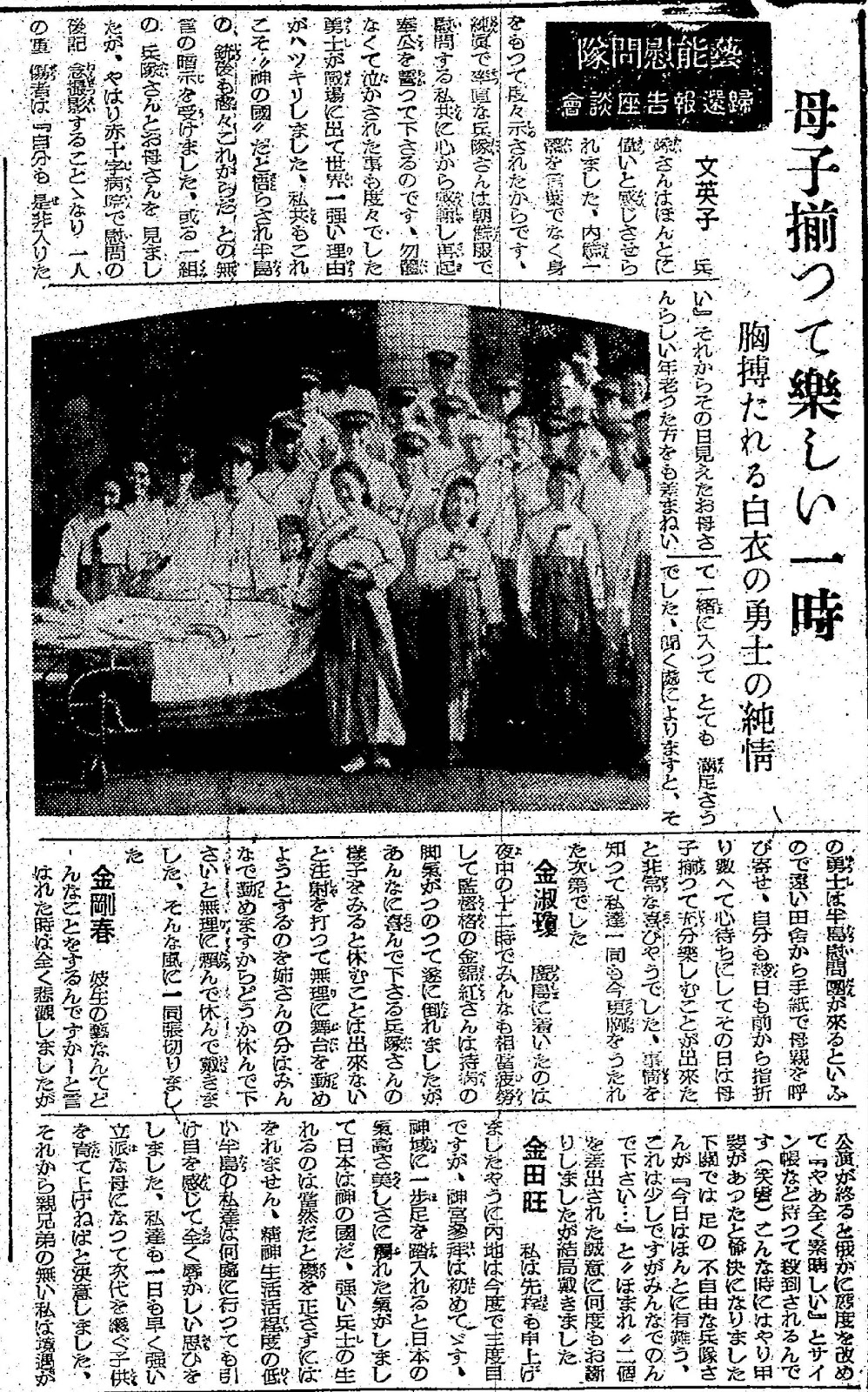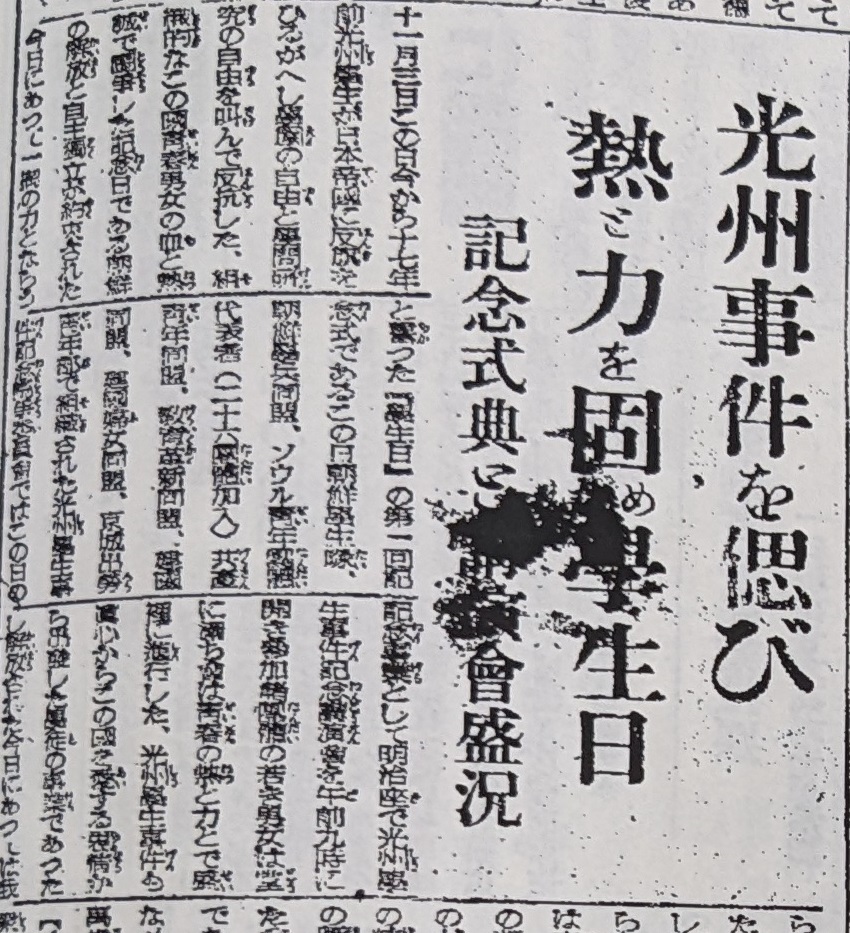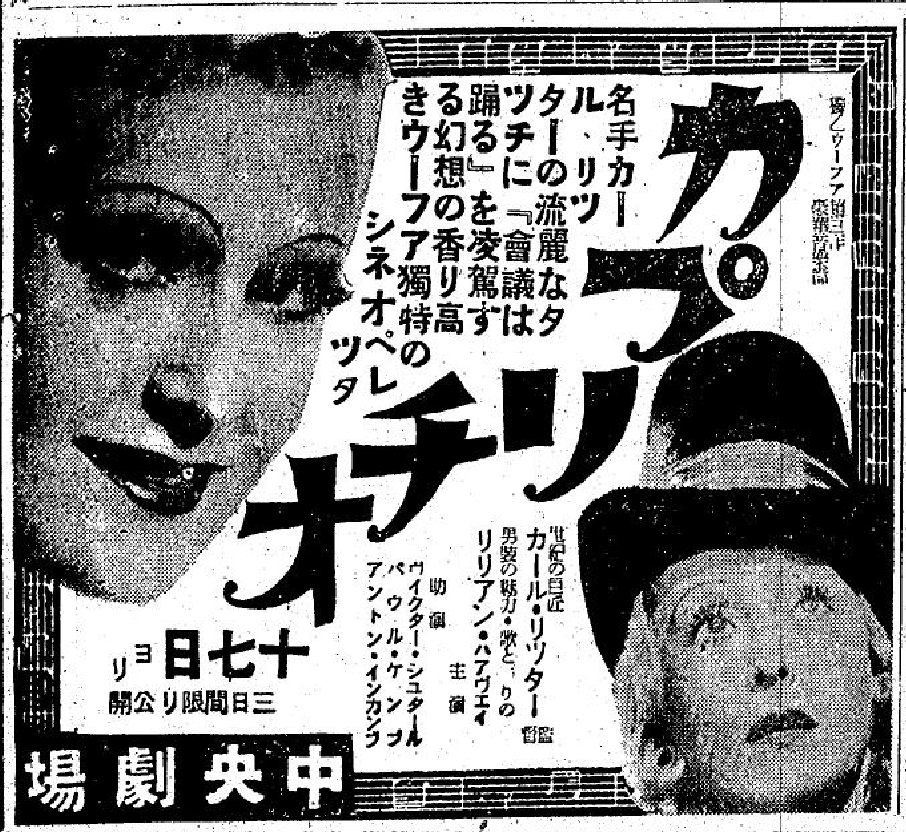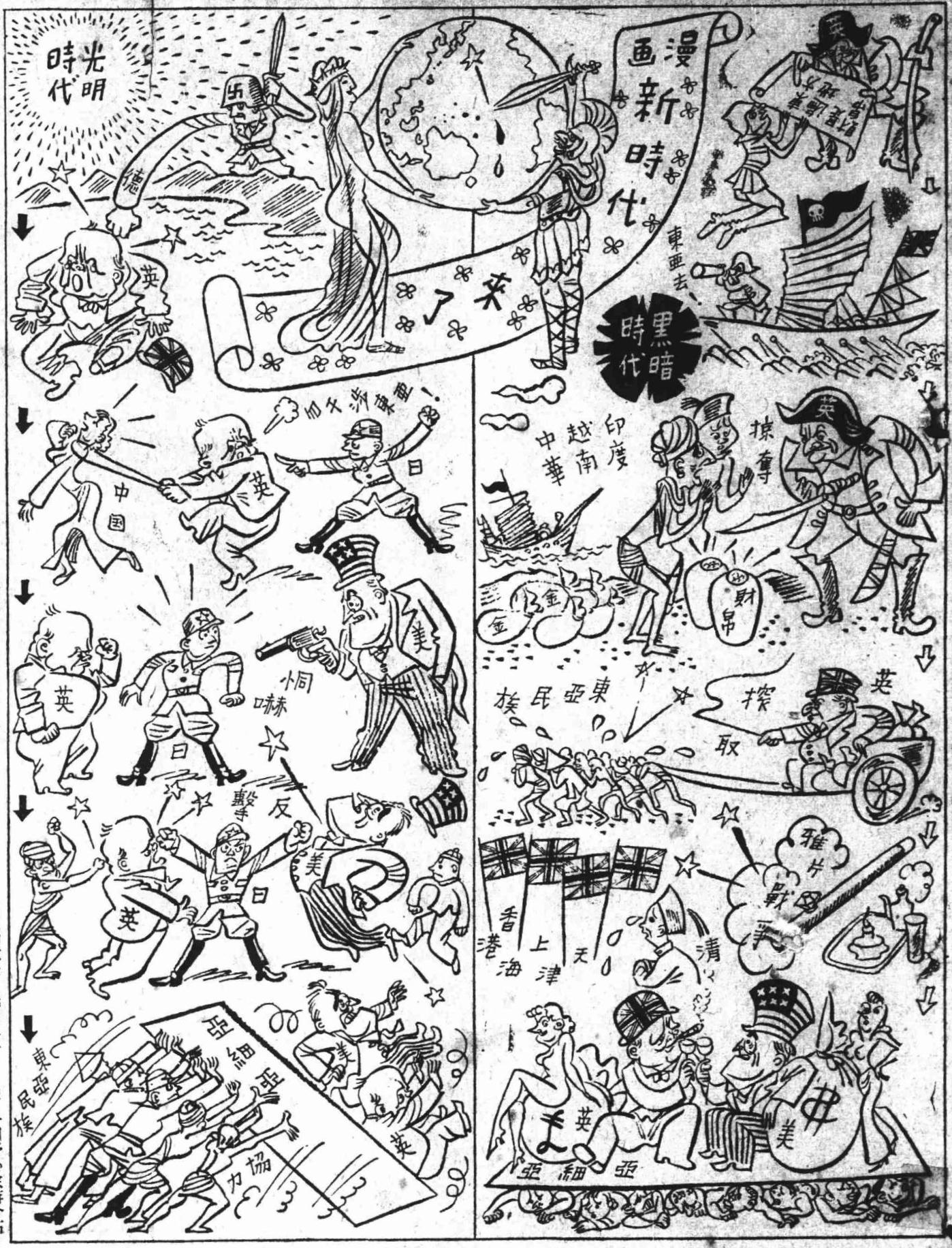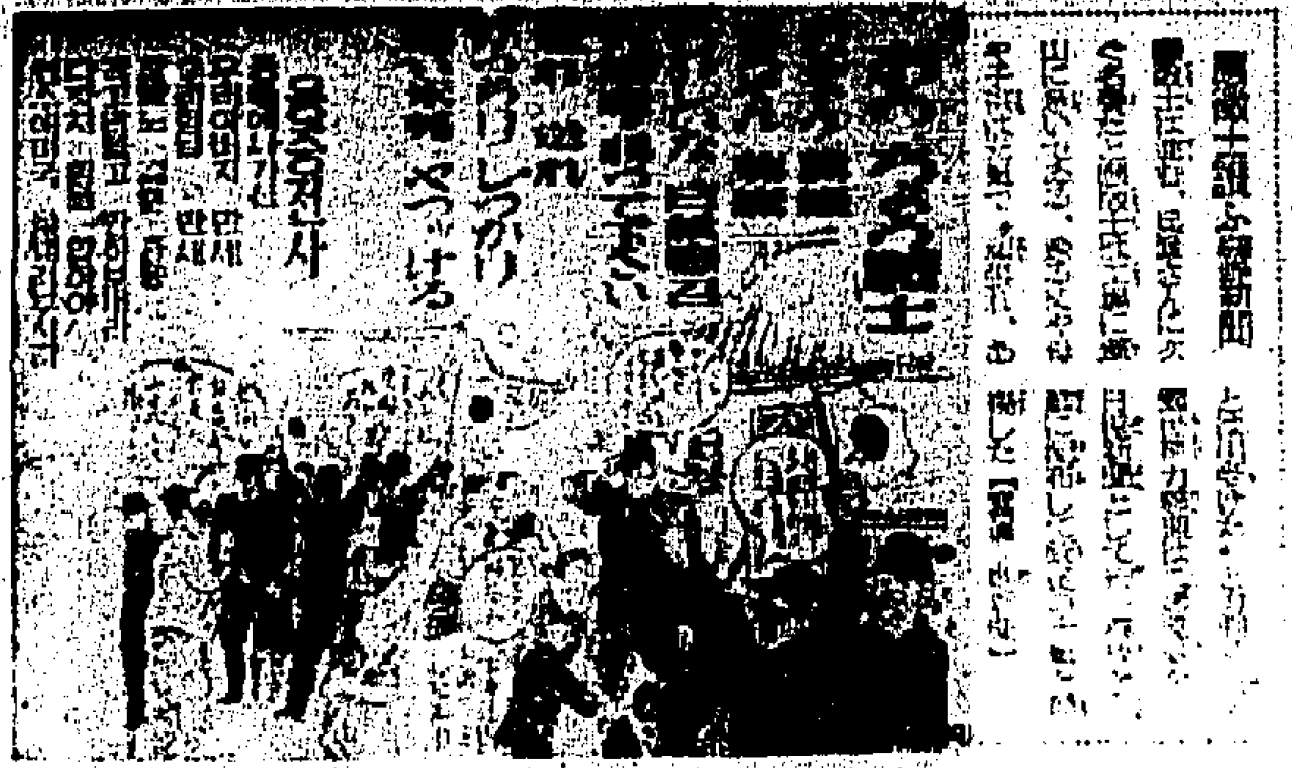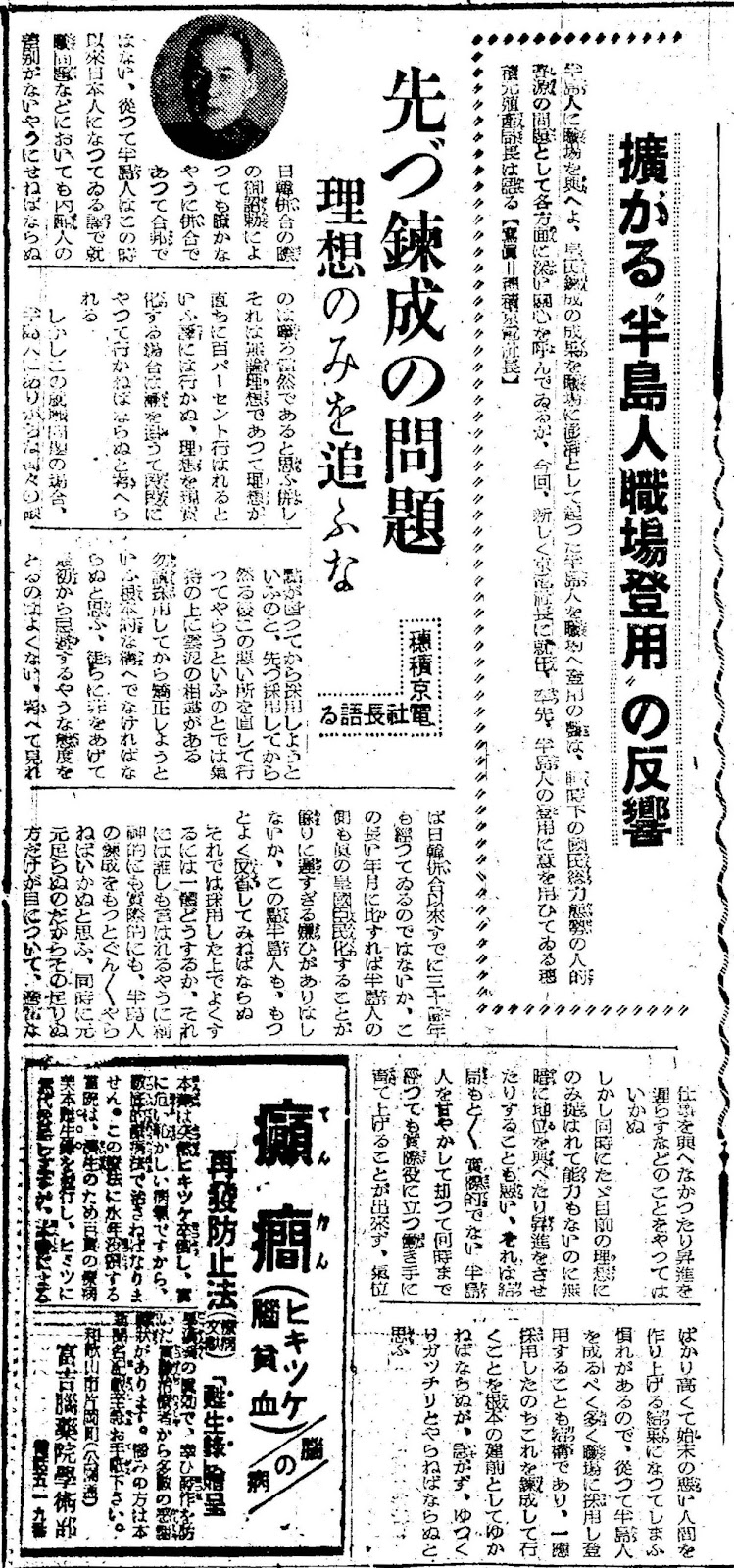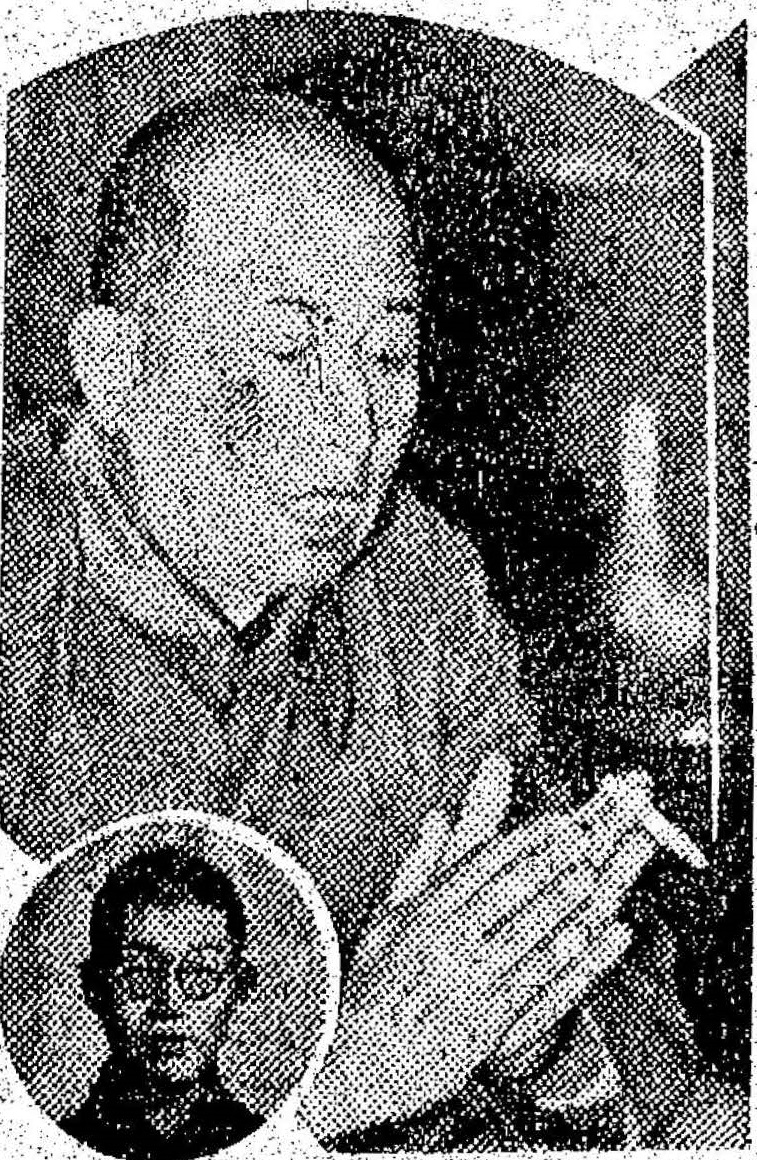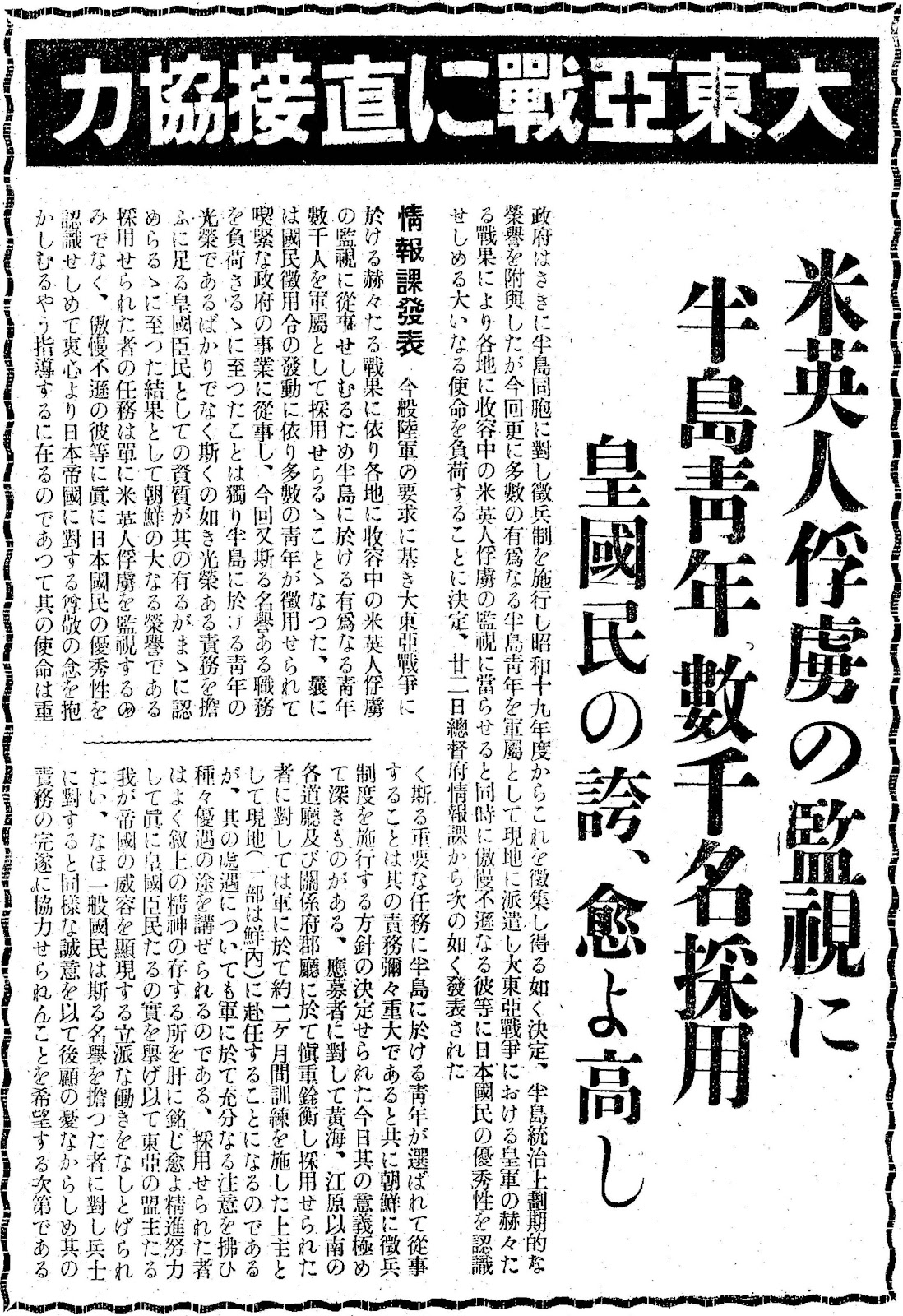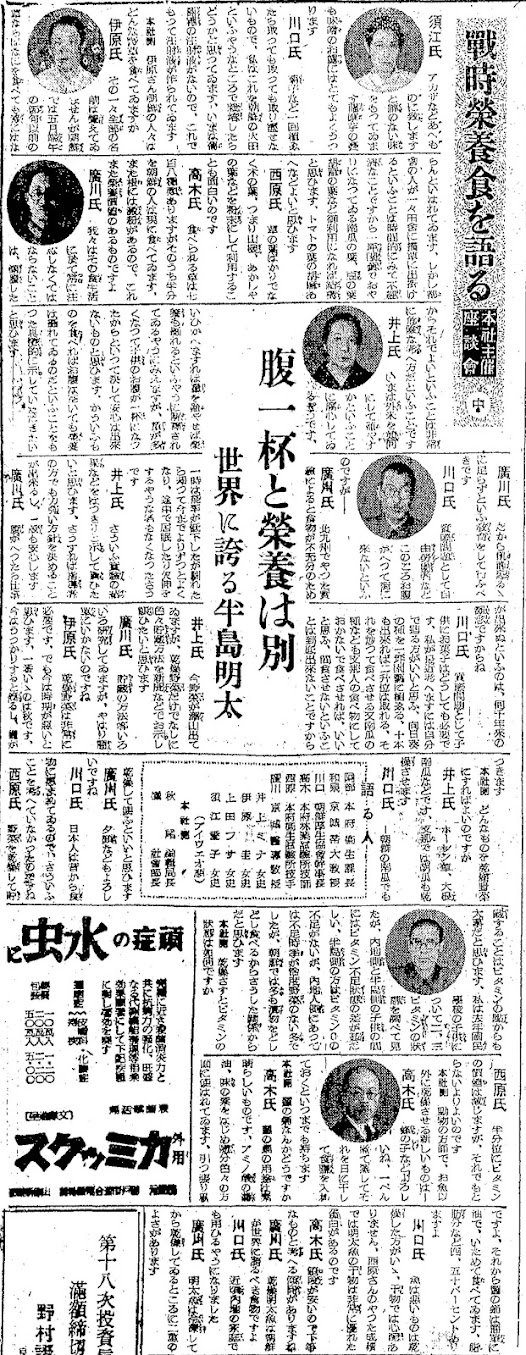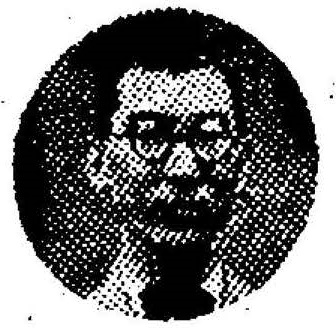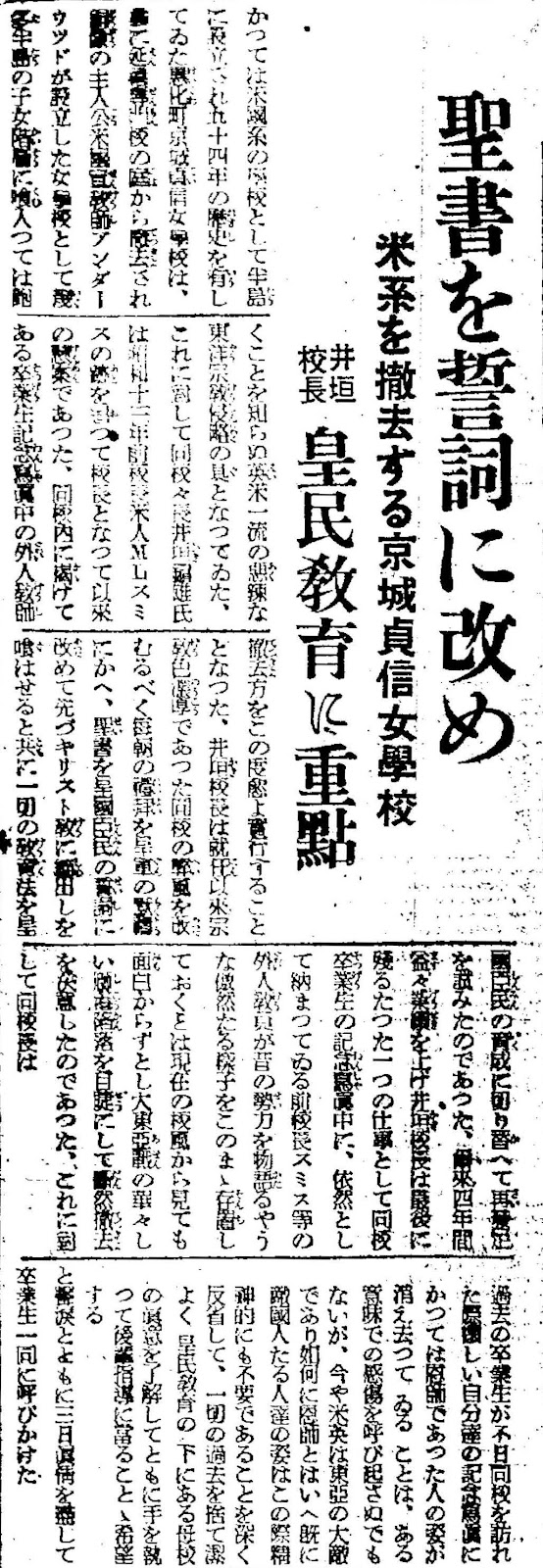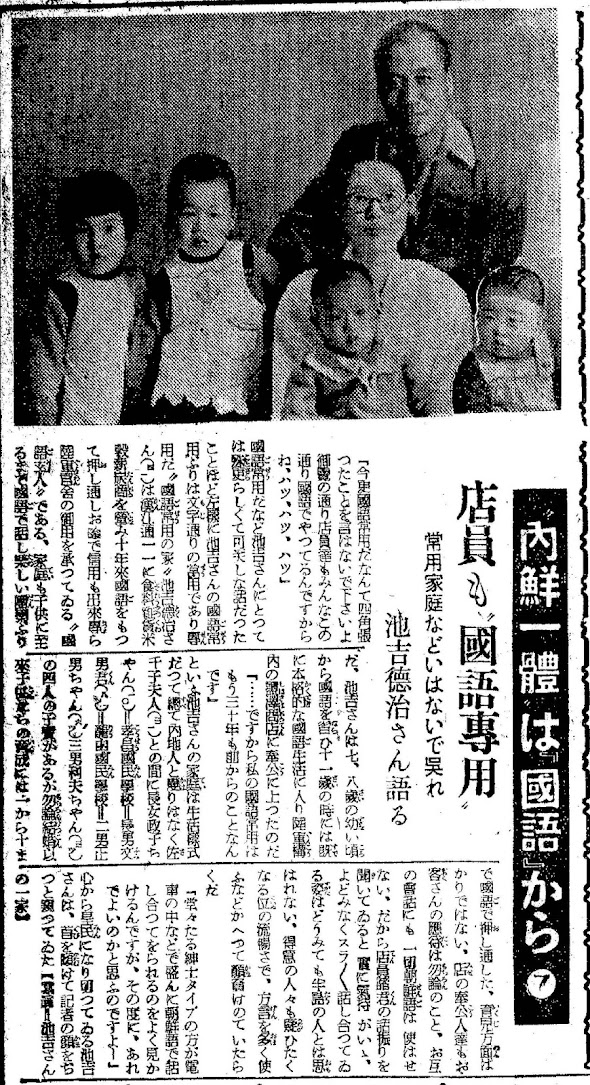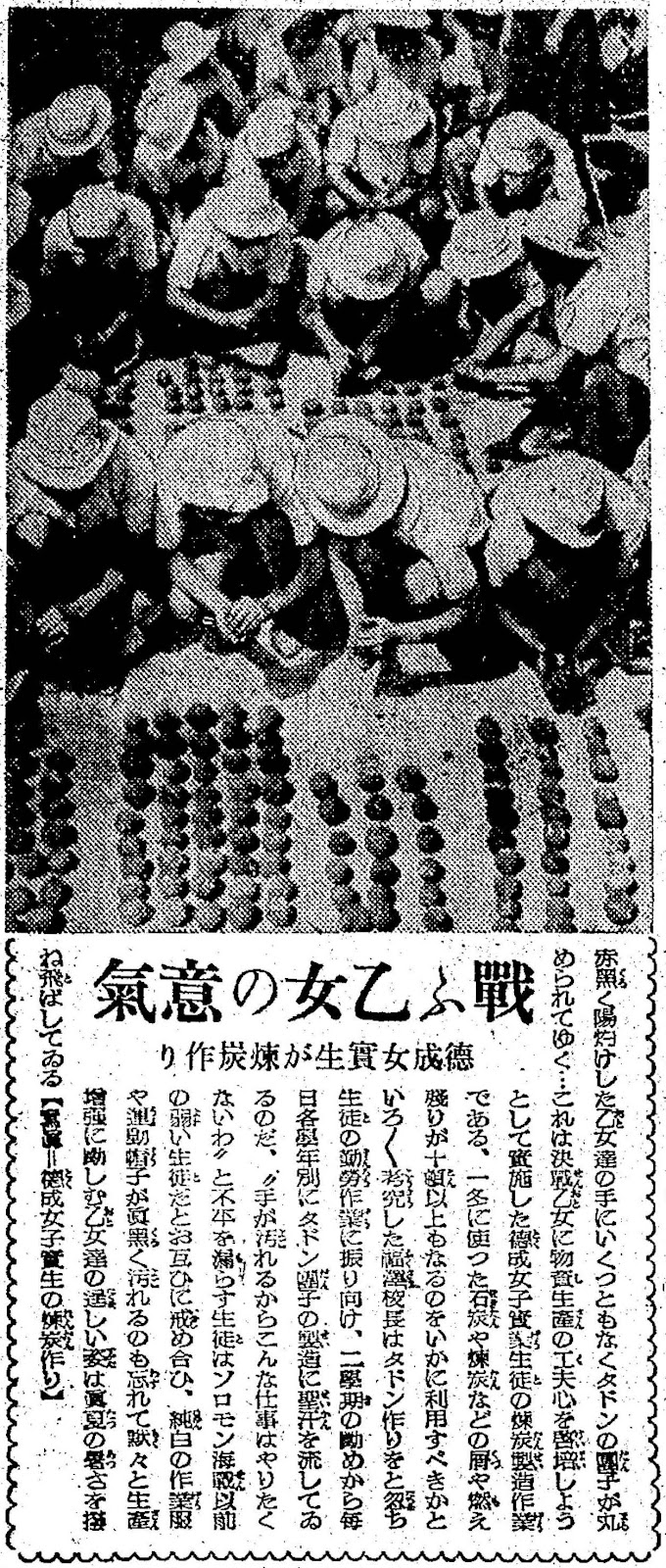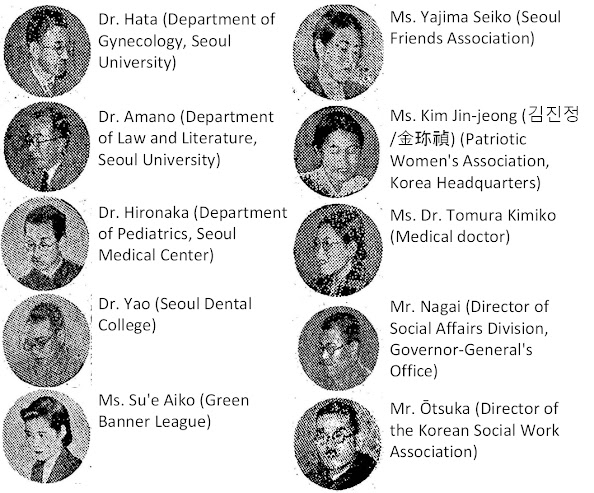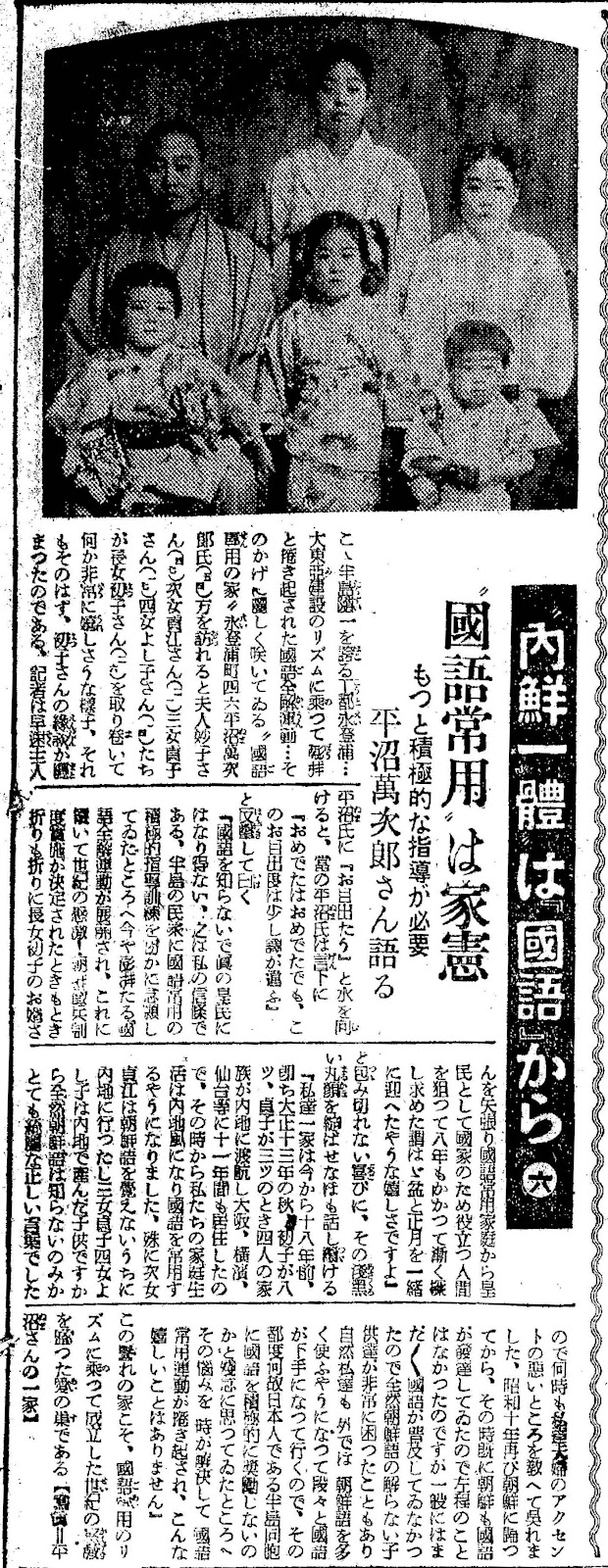
A Korean father spent 8 years looking for the right prospective husband who only spoke Japanese and was a “true Imperial subject” to marry his eldest daughter, who was the only child who could speak Korean, while her 3 younger sisters spoke only Japanese (Yeongdeungpo, 1942)
Notes: Back row left-to-right: father Manjirō (~42), mother Taeko (~35), daughter Hatsuko (~14). Front row left-to-right: daughters Sadako (~5), Sadae (~9), Yoshiko (~2) assuming this photo was taken around 1930.
More “Model Korean Families” are featured in Keijo Nippo at this link: https://exposingimperialjapan.com/search/label/Model%20Korean%20Family
(Translation)
Gyeongseong Ilbo (Keijo Nippo) May 19, 1942
The Unification of Japan and Korea starts with the Japanese Language
The “regular use of the Japanese language” is a family rule
More active guidance is needed
Mr. Hiranuma Manjirō tells his story
Yeongdeungpo, the capital of industry, boasts the best of the Korean peninsula. The movement for the complete understanding of the Japanese language, which was stirred up in the rhythm of the construction project for Greater East Asia, is still ongoing today. When we visited Hiranuma Manjirō (54) at 46-Yeongdeungpo, where a “household dedicated to the Japanese language” was beautifully blooming in the shadows of this movement, we found his wife Taeko (47), second daughter Sadae (21), third daughter Sadako (17), and fourth daughter Yoshiko (14) surrounding his eldest daughter Hatsuko (26) and looking extremely happy. That’s no wonder. Hatsuko’s arranged marriage had been finalized. The reporter immediately turned to Mr. Hiranuma, the head of the household, to offer his congratulations, but Mr. Hiranuma shot back, “Congratulations are great, but our good fortune is little bit different this time”. Mr. Hiranuma continued,
“You cannot be a true Imperial subject without knowing the Japanese language. This is my belief. I had been secretly praying for the people of the Korean peninsula to be actively trained in the regular use of the Japanese language, when the movement for the complete understanding of the Japanese language started surging like a flood, which was followed by the excitement of the century! It took me eight years to finally find a son-in-law for my eldest daughter, Hatsuko, from a family that also regularly used the Japanese language, aiming for someone who would serve the nation as an Imperial subject. I was as happy as if we were celebrating the Obon Lantern Festival and New Year’s Day together, just like when it was decided to implement the conscription system in Korea”. His dark round face broke into a smile with joy that was too much to contain. He continued,
“Eighteen years ago, in the fall of 1924, when Hatsuko was eight and Sadako was three, our family of four traveled to Japan proper and lived in Osaka, Yokohama, and Sendai for eleven years. Since then, our family lifestyle has become Japanese, and we came to regularly use the Japanese language. In particular, our second daughter Sadae went to Japan proper before learning Korean, and our third daughter Sadako and fourth daughter Yoshiko were born in Japan proper. So, not only do they not know Korean at all, but they also speak Japanese very beautifully and correctly, so much so that they always teach us what is wrong with our accents. By the time we returned to Korea in 1935, the Japanese language had already been well developed in Korea, so there was not much of a problem. However, since the Japanese language was not yet widely spoken in general, our children who did not understand Korean at all encountered a lot of trouble, and we came to use a lot of Korean whenever we went out. As a result, our Japanese language skills became progressively worse. Every time our Japanese became worse, we wondered to our disappointment why our Korean compatriots, who were technically Japanese people, were not being actively encouraged to learn the Japanese language. However, time has solved that problem, as the movement for the regular use of the Japanese language has been launched, and there is nothing happier than this.”
This praise-worthy household is a love nest that thrives on the excitement of the century that was established in the rhythm of love for the Japanese language. [Photo: Mr. Hiranuma’s family]
(End Translation)
Source: https://www.archive.org/details/kjnp-1942-05-19
Notes: The article says that Sadako was three years old in 1924, but that would make her 21 years old in 1942. I think they meant Sadae, not Sadako, was three years old in 1924.
The father says that the Koreans were technically Japanese people. This refers to the prevalent theory at the time that, when Korea was annexed into Imperial Japan in 1910, the Koreans in Korea automatically became Japanese people in theory, and it was up to the government to make the Koreans become Japanese people in practice. Quoting a Japanese CEO of Kyoden Corporation in an article in 1943:
As is clear from the Imperial Rescript on the annexation of Japan and Korea, it was an annexation, not a union. Therefore, the Koreans have become Japanese since that time, and it is natural that there should be no discrimination against Koreans in employment issues. However, this is of course an ideal, and it is not possible for an ideal to be implemented 100% immediately. To make the ideal into reality, I think that things should proceed gradually in incremental steps.
Yeongdeungpo was a small satellite town on the outskirts of Seoul across from the Han river, but rapidly becoming an industrial hub in the 1940’s. It is now just another neighborhood of Seoul. This old map of Greater Seoul from 1927 shows its location back then, which I annotated for clarity.
(Transcription)
京城日報 1942年5月19日
内鮮一体は『国語』から
”国語常用”は家憲
もっと積極的な指導が必要
平沼万次郎さん語る
ここ半島随一を誇る工都永登浦。大東亜建設のリズムに乗って澎湃と捲き起こされた国語全解運動。そのかげに麗しく咲いている”国語専用の家”永登浦町四六、平沼万次郎(五四)方を訪れると夫人妙子さん(四七)、次女貞江(二一)、三女貞子さん(一七)、四女よし子さん(一四)たちが長女初子さん(二六)を取り巻いて何か非常に嬉しそうな様子。それもそのはず。初子さんの縁談が纏まったのである。記者は早速主人平沼氏に『おめでとう』と水を向けると、当の平沼氏は言下に『おめでたはおめでたでも、このお目出度は少し訳が違う』と反撃して曰く、
『国語を知らないで真の皇民にはなり得ない。之は私の信条である。半島の民衆に国語常用の積極的指導訓練を密かに念願していたところへ、今や澎湃たる国語全解運動が展開され、これに続いて世紀の感激!朝鮮徴兵制度実施が決定されたときも、とき折りも折りに長女初子のお婿さんを矢張り国語常用家庭から皇民として国家のため役立つ人間を狙って八年もかかって漸く探し求めた謂わば盆と正月を一緒に迎えたような嬉しさですよ』と包み切れない喜びに、その浅黒い丸顔を綻ばせ、なおも話し続ける。
『私達一家は今から十八年前、即ち大正十三年の秋、初子が八つ、貞子が三つのとき四人の家族が内地に渡航し大阪、横浜、仙台等に十一年も居住したので、その時から私たちの家庭生活は内地風になり、国語を常用するようになりました。殊に次女貞江は朝鮮語を覚えないうちに内地に行ったし、三女貞子四女よし子は内地で産んだ子供ですから全然朝鮮語は知らないのみか、とても綺麗な正しい言葉でしたので何時も私達夫婦のアクセントの悪いところを教えてくれました。昭和十年再び朝鮮に帰ってから、その時既に朝鮮も国語が発達していたので、左程のことはなかったのですが、一般にはまだまだ国語が普及していなかったので全然朝鮮語の解らない子供たちが非常に困ったこともあり、自然私達も外では朝鮮語を多く使うようになって段々と国語が下手になって行くので、その都度何故日本人である半島同胞に国語を積極的に奨励しないのかと残念に思っていたところ、その悩みを時が解決して国語常用運動が捲き起こされ、こんな嬉しいことはありません』
この誉れの家こそ、国語愛用のリズムに乗って成立した世紀の感激を盛った愛の巣である。
【写真=平沼さんの一家】
